Cultural Activities
Yerevan City Tour. 26.07.2020 (Sunday, 11:00-16:00, 5 hours, 40 Euros per person, lunch and entrance fees included). The tour will start with the Republic Square, which is the centre of the city. Here there are Government House, Hotel Marriott Armenia, several ministries, museums (Museum of History of Armenia), Art Gallery of Armenia with a collection of over 16,000 paintings. The excursion will continue with Matenadaran (a unique museum of ancient manuscripts, the first of the kind in the world, 23,000 items in different languages), Ararat Cognac (Brandy) Factory on the bank of the river Hrazdan, Vernisage (national market of hand-made souvenirs), a lunch break in one of the nice Ring Park restaurants. On the way, the visitors will see many monuments and may do shopping. The excursion will end at the Opera House.
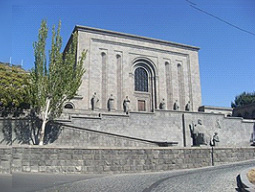
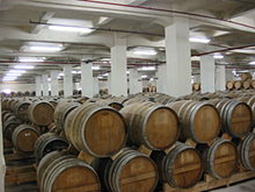

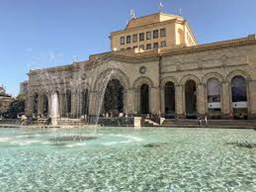
Welcome Reception at Ani Plaza Hotel (TBC). 26.07.2020 (Sunday, 18:00-20:00). Included in the Registration Fee.
Field trip to Zorats Karer (Karahunge, the Armenian Stonehenge), including also Khor Virap monastery and Noravank church. 29.07.2020 (Wednesday, 09:00-20:00, 11 hours, 60 Euros per person, lunch and entrance fees included). We will have a guide who is specialist in Archaeoastronomy, Dr. Karen Tokhatyan. A trip to south from Yerevan. Khor Virap is one of the closest points to the biblical Mt. Ararat (5165m), which is considered as one of the highest mountains by its relative height (from foot to top), and has a fascinating view. Khor Virap is famous because it is where Grigor Lusavorich (St. Gregory the Illuminator) was imprisoned for 13 years before curing King Trdat III of a disease. After this Armenia became the first Christian nation in the world in 301. Noravank is a nice church (XII-XIV c.), where you reach through a picturesque canyon from the highway. The trip will take you farther to the Sisian region, to Zorats Karer (Karahunge). This ancient religious monument and observatory is the Armenian Stonehenge, and surprisingly, the name is quite similar by its meaning: kar means stone, and hunge sounds similar to henge, which has several explanations. There are several estimations of the age of Karahunge going back to 7600 years. There are numerous holes in the standing stones indicating the directions of rise and set of some bright stars when you look through any two of them.
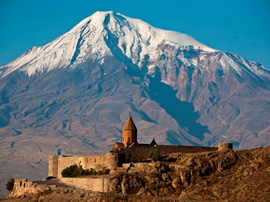
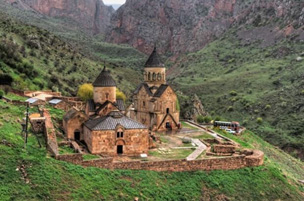
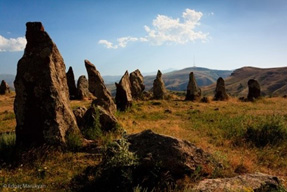

Conference Dinner (at Megerian Carpet Museum). 30.07.2020 (Thursday), including free access to traditional Armenian carpets, Armenian traditional dance group (the participants may buy carpets in the museum). 50 Euros

Field trip to Byurakan Astrophysical Observatory (BAO), including also Amberd Fortress and Tegher Monastery. 01.08.2020 (Saturday, 09:00-19:00, 10 hours, 40 Euros per person, lunch and entrance fees included; optional extension with Night stargazing, dinner also included, 60 Euros). There are wonderful sightseeing around Byurakan. The Mausoleum of Armenian kings, built in 364 is in front of Byurakan (opposite bank of Amberd river), in historical Aghtsk village. A little higher from it, there is famous Tegher St. Astvatzatzin temple, with standing buildings since 1213. A little higher from Tegher, at 2300 m above sea level, there is famous picturesque Amberd fortress (7th century). In 10-11 centuries, it was a well-built settlement and one of the important military strong points of the Armenian Bagratouni kings. The Institute of Radiometric Measurements is located in Orgov. Its main instrument is a 54 m Spherical Radio telescope, which is correlated with a 2.6 m optical telescope, working as a radio-optical telescope (ROT-54/2.6). The institute has also a 16 m radio dish, time service, etc. The Byurakan Astrophysical Observatory (BAO) is the main destination. It was founded by the famous Armenian scientists Viktor Ambartsumian, and the visitors will see Viktor Ambartsumian house-museum, the 1 m Schmidt telescope and the largest 2.6 meter telescope, as well as the mobile planetarium. An extension suggests to stay for dinner and later have night observations with small telescopes.
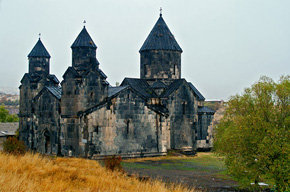
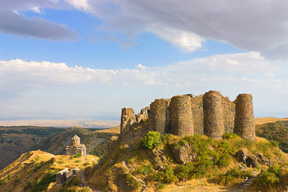
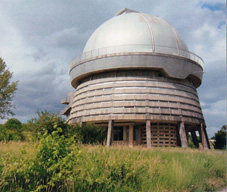
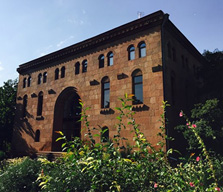
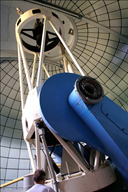
Concert: (27.07, 28.07 or 31.07) TBD.
The tours are possible in case at least 15 participants are registered.
All pick-ups and drop-offs are being organized from/to hotels booked through LOC. Other participants should take the buses near one of these hotels.
Pre- and Post-Conference 2-Day Tours in Armenia
- 25-26.07.2020 (Saturday-Sunday)
- 01-02.08.2020 (Saturday-Sunday)
GARNI and GEGHARD. Sunday, July 26 and Saturday, August 1 (8 hours, 36 Euros, including lunch and entrance fees). The Sun Temple of Garni (built in the Roman style, very like the Greek Parthenon) is 28 km from Yerevan. There is an architectural complex of the 3rd century B.C. The temple itself was built in the 1st century A.D. by the Armenian King Tiridates. This was the summer residence of the Armenian kings. Archaeologists are still working on the Garni complex. Near the temple, down to the gorge you can see the junction two rivers, Azat and Geghard. 6 km from Garni there is a fantastic sample of medieval Armenian architecture, the Geghard Cave Monastery. Its first mention is to be found in the 4th century, but the main cathedral was built in 1215. The structures inside and outside the mount are one, compositionally and stylistically. The visitors will have lunch at Geghard in the open air.
EJMIATZIN, SARDARAPAT and ZVARTNOTS. Sunday, July 26 and Saturday, August 1 (8 hours, 40 Euros, including lunch and entrance fees). This excursion takes you to an old city Ejmiatzin (Vagharshapat), the former capital of the Kingdom of Armenia (in the II-IV centuries). Ejmiatzin is 20 km from Yerevan, in the Ararat Valley – the granary of Armenia. The Cathedral is Ejmiatzin’s main attraction. Legend has it that it was here that Jesus Christ descended from heaven to show where he wanted a church built. It was subsequently named Ejmiatzin. It is the centre of the Armenian Apostolic Church and all the Armenian eparchies. There are also churches of the Holy Virgin of Hripsime (or St. Hripsime, 618 A.D.), St. Gayane (630 A.D.) and the ruins of the church Zvartnots (VII c., about 2 km from Ejmiatzin). Ejmiatzin was the centre for world attention in 2001 during the celebration of the 1700th anniversary of adoption of Christianity in Armenia, first country adopting Christianity as state religion. Sardarapat Memorial is a memorial complex to the Battle of Sardarapat located in the village of Araks, in the Armavir Province of Armenia, 11 kilometers southwest of Armavir town.
LAKE SEVAN. Sunday, July 26 and Saturday, August 1 (10 hours, 50 Euros, including lunch and dinner). Lake Sevan, the gem of Armenia, is a wonder of nature, located 60 km from Yerevan up a highway which cuts northward through mountains and rocks. Sevan fills a gigantic depression situated at a height of almost 2,000 metres above sea level. The poet once said of its waters that they were like a piece of sky that had descended to the earth among the mountains. The average temperature of Sevan’s water in summer is +20-22°C in the afternoon. Though the water is expected to be cold in October, the visitors may enjoy swimming if there is no wind. Sevan has always been famous for its fish, especially trout, called Ishkhan («prince-fish»), a fish which graced many great lords’ tables in times of old. There are several sightseeing on the way to Sevan and around the lake, too, including medieval monasteries and the Noratus Cemetery, a place with numerous Armenian khach-kars (cross-stones).
NORTH ARMENIA. Haghpat, Sanahin, Odzun, Haghartzin etc. The monastery of Haghpat (the name is registered in the list of World Heritage of UNESCO since 1996) is a monastic complex, centre of medieval education (tenth century) in the same region as that of Sanahin, 6 km from it. The monastery is located in the homonym village founded by the queen Khosrovanush in 976. Sanahin Monastery is a medieval monastic complex. It is in the north of the country, in the province of Lori, on a high plateau on the right bank of the river Debed. The name Sanahin in Armenian means “older than that” evoking that it is older than the nearby Haghpat monastery. Odzun is a fairly large village in the Lori region situated on a high plateau of Debed River, just 6 miles south of the city of Alaverdi, which is famous for its church. Odzun temple is one of the oldest in the country (580). Distinguished by its proportions it is different form almost all Armenian monuments built after V century and is very original. The church of Odzun is a palace of a hall of three naves topped by a dome witnessing the early development of Armenian architects, preserved till today in excellent condition. Dilijan's most popular religious site is the Haghardzin Monastery (XII century), erected in the place of another 10th century monastery. It is situated in the gorge of the stream Haghardzin, Aghstev River tributary, in the woods, cut off from civilization.
SOUTH ARMENIA. Jermuk, Goris, Knhdzoresk, Tatev, Kapan, etc. Located 1600 high in the mountains, in Zangezur, Tatev Monastery forms an incredible harmony with the picturesque landscape creating an impression as if it were an inseparable part of that landscape. The monastery was founded in the fourth century at the site of a pagan temple. There was a church and a few monks. Jermuk resort city is situated on south-west of Armenia in the upper river Arpa. It is 173 km far from Yerevan. The area is at an altitude of 1980-2080 metres above sea level. Jermuk as both a resort zone and as a living area is as ancient as Vayots Dzor highland itself. In Goris there are many unusual towers, forts, pyramids, caves, and rocky wonders. The city is laid out in the Valley of the Vararak River, which is surrounded by mountains. The rocky dwelling, which is under special maintenance, is not only historical, but important in terms of tourism. The first thing that lures tourists to Goris is the Monastery of Tatev. Those who visit Goris are amazed by the marvelous rocky pyramids and towering rocks. The monastery was founded in the 9th century. With its wildlife and lush forests Kapan has always been one of the most attractive cities of Armenia. Baghaberd Fort, which is about 10 km from Kapan, dates back to the 3rd century. It was built during the rule of the king Arshak II and was of great strategic importance. Vahanavanq is about 6 km from Kapan. It was founded in 911. Vahanavanq was the cultural and religious center of the historic Syunik Province. Shikahogh reserve covers about 10,000 hectares (25,000 acres) of land. It is the second largest and the only intact forest reserve in Armenia.
The tours prices include:
- info booklet about the sightseeing
- bus transportation
- pick up and drop off at 3 hotels reserved by LOC
- professional English-speaking guide
- free entrance to all sites
- lunch in an Armenian traditional restaurant
- stop-over at Armenian souvenirs point
- group photo
 Home
Home